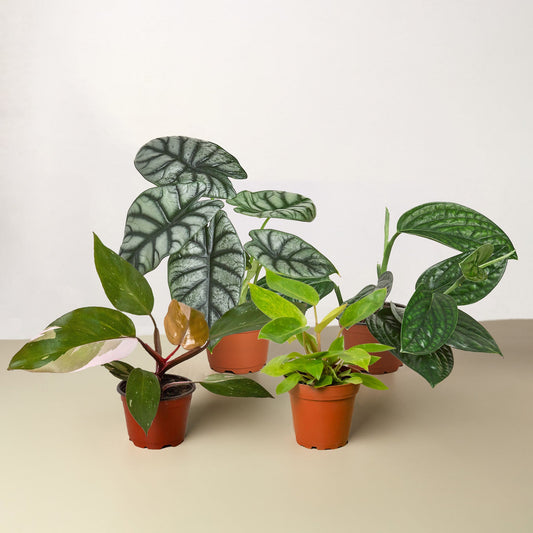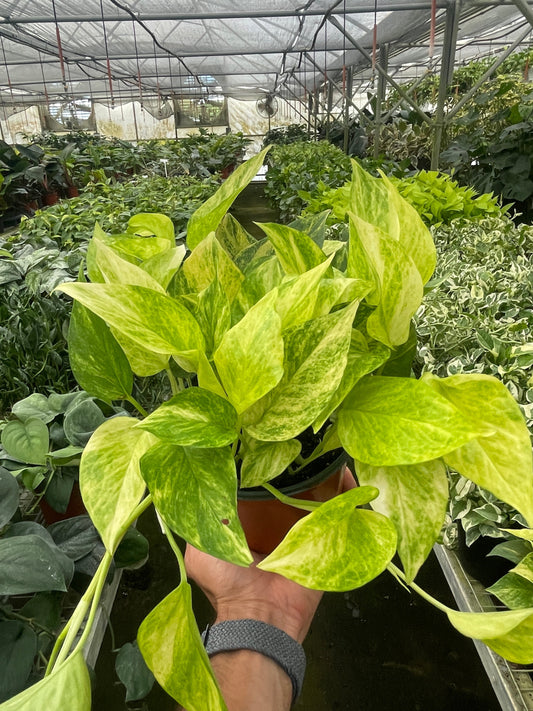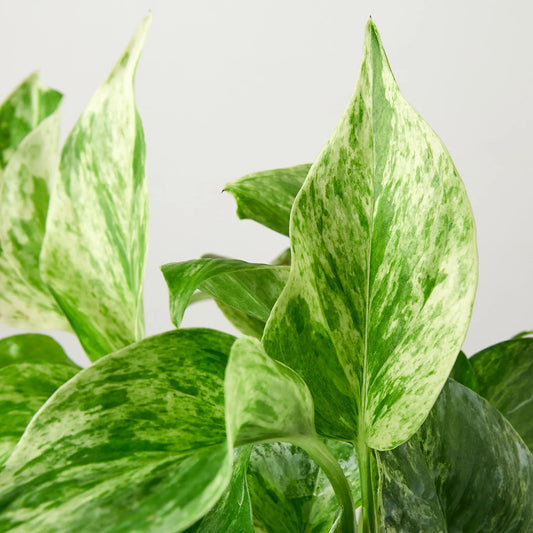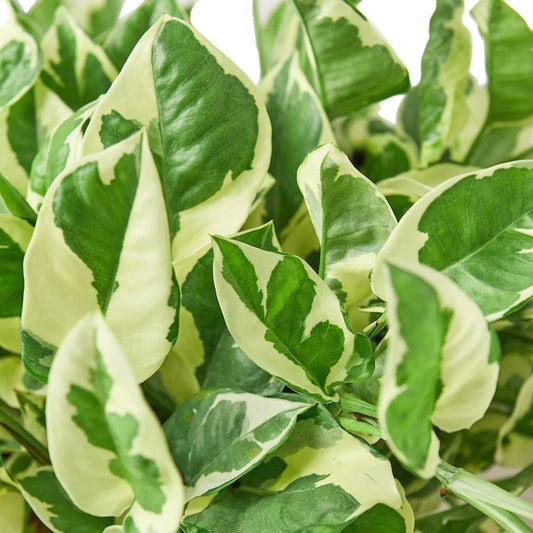Calathea Aerial Roots: Everything You Need to Know
Cafe Planta Team
Have you ever noticed those little roots poking out of your calathea plant and wondered what they are? You're not alone! Calatheas, with their vibrant leaf patterns and striking colors, are a favorite among plant lovers. But their aerial roots? That's a topic that often raises eyebrows. Let's dive into what these roots are all about and how they can affect your plant care routine.
In this article, we'll explore everything you need to know about calathea aerial roots. From understanding what they are and why they form to learning how to care for them properly, we've got you covered. By the end, you'll have a solid grasp on how to keep your calathea happy and thriving, even when these quirky roots make an appearance.
What Are Aerial Roots?
Aerial roots are an interesting feature in many plants, not just calatheas. Essentially, they're roots that grow above the ground, rather than in the soil. These roots can serve various functions depending on the plant species. For some, they help with climbing, while for others, they're a means of absorbing moisture from the air.
In the case of calatheas, aerial roots typically don't play a significant role in climbing or moisture absorption. They're more of a natural byproduct of the plant's growth pattern. You might notice them sprouting from the stem or near the base of the plant. While these roots can be a bit surprising at first, they're generally harmless and can even be a sign that your plant is doing well.
Understanding how aerial roots work can help you make informed decisions about your plant care routine. For instance, if you see these roots, it might be an indication that your calathea is looking for more support or stability. This could be a cue to check if your plant needs repotting or if it's getting the right amount of water and nutrients.
Why Do Calatheas Develop Aerial Roots?
Calatheas develop aerial roots for a few reasons, and understanding these can help you better care for your plant. One of the main reasons is the plant's natural adaptation to its environment. In their native habitats, calatheas grow in dense, humid forests where they often need to stabilize themselves in loose or shifting soil. Aerial roots can provide additional support and help the plant anchor itself more securely.
Another reason for these roots could be related to the plant's overall health and growth. If your calathea is in a pot that's getting a bit cramped, the plant might start producing aerial roots as a way to seek out more space. This is a natural part of its growth process and can serve as a gentle reminder that it might be time to consider repotting.
Interestingly enough, aerial roots can also indicate that your plant is happy and thriving. When a plant is healthy and growing well, it tends to produce more roots in general, including aerial ones. So, if you start to see these roots, it could be a sign that your calathea is content with its current environment and care routine.
Should You Be Concerned About Aerial Roots?
Seeing aerial roots on your calathea can be a bit startling if you're not expecting them, but there's typically no need for alarm. These roots are a normal part of the plant's growth and development, and they usually don't pose any threat to the plant's health.
However, it's always a good idea to pay attention to what your plant is telling you. If you notice a sudden increase in aerial root growth, it might be worth taking a closer look at your plant's environment and care routine. Check the soil to ensure it's draining properly and that your plant isn't becoming root-bound. Also, consider whether the humidity levels in your home are suitable for a calathea, as these plants thrive in more humid conditions.
In most cases, as long as your calathea is otherwise healthy and showing no signs of stress or disease, you can simply enjoy the unique appearance of its aerial roots. They add a bit of character to your plant and can be a fun conversation starter with fellow plant people!
How to Care for Calathea Aerial Roots
Taking care of your calathea's aerial roots doesn't require much extra effort, but it's good to be mindful of them as part of your overall plant care routine. Here are some tips to keep in mind:
- Leave them be: Aerial roots don't need to be trimmed or removed. Let them grow naturally, as they're a normal part of the plant's structure.
- Monitor humidity: Calatheas enjoy higher humidity, which can also benefit aerial roots. Consider misting your plant or using a humidifier to maintain the right environment.
- Check for repotting: If your calathea is producing a lot of aerial roots, it might be time to repot into a larger container. This gives the roots more room to grow and helps prevent the plant from becoming root-bound.
By integrating these simple steps into your plant care routine, you can ensure that your calathea and its aerial roots stay healthy and vibrant.
Repotting Calathea with Aerial Roots
Repotting is a crucial part of plant care, and it can be especially important for calatheas with aerial roots. If you notice your plant's pot is getting a bit crowded, or if the aerial roots seem to be searching for more space, it might be a sign that it's time for a new home.
When repotting, choose a pot that's slightly larger than the current one. Make sure it has drainage holes to prevent waterlogging, which can be detrimental to both the underground and aerial roots. Use a well-draining soil mix, ideally one that's formulated for tropical plants, to provide the best environment for your calathea's roots.
During the repotting process, handle the plant gently to avoid damaging any of the roots. If you notice any dead or damaged roots, you can trim them with clean scissors to promote new growth. Once repotted, give your calathea a thorough watering and allow it some time to adjust to its new surroundings.
Common Mistakes to Avoid
When it comes to caring for calatheas and their aerial roots, there are a few common pitfalls to watch out for. Avoiding these mistakes can help you maintain a healthy and thriving plant:
- Overwatering: Too much water can lead to root rot, which affects both underground and aerial roots. Ensure your pot has proper drainage and only water when the top inch of soil feels dry.
- Ignoring humidity: Calatheas love humidity, and neglecting this aspect can lead to browning leaf edges and unhappy roots. Use a humidifier or regularly mist your plant to keep it content.
- Neglecting repotting: Allowing your calathea to become root-bound can stunt its growth and lead to an overproduction of aerial roots. Repot your plant every year or two to give it ample room to grow.
By being mindful of these common mistakes, you can create a nurturing environment for your calathea and its aerial roots, helping them to flourish.
Integrating Calatheas into Your Home Decor
Calatheas are not just about their beautiful foliage and unique aerial roots—they can also make a stunning addition to your home decor. With their vibrant patterns and colors, they can add a touch of nature and elegance to any room.
Consider placing your calathea in a decorative pot that complements the colors in its leaves. Position it near a window with indirect light to highlight its beauty without causing leaf burn. Calatheas also pair well with other tropical plants, creating a lush indoor jungle vibe.
Incorporate your calathea into your living space in a way that enhances both the plant and the room's aesthetic. Whether it's on a shelf, a plant stand, or as a centerpiece on your dining table, your calathea can be a focal point that draws admiration from guests and brings a fresh, natural element to your home.
Dealing with Pests and Diseases
Even with the best care, calatheas can sometimes fall victim to pests and diseases. Common culprits include spider mites, aphids, and mealybugs, which can affect both the leaves and the roots.
To keep pests at bay, regularly inspect your plant and clean the leaves with a damp cloth to remove dust and debris. If you notice any signs of infestation, such as webbing or sticky residue, take action immediately. Use insecticidal soap or neem oil to treat the affected areas and prevent the pests from spreading.
Diseases, such as root rot, can also impact your calathea's health. This is often caused by overwatering or poor drainage. To prevent root rot, ensure your plant's pot has adequate drainage holes and avoid letting it sit in water. If you encounter root rot, remove the affected roots and repot the plant in fresh soil.
By staying vigilant and addressing issues promptly, you can protect your calathea from pests and diseases, keeping it healthy and vibrant.
Benefits of Having Calatheas in Your Home
Having calatheas in your home offers more than just aesthetic appeal. These plants can also contribute to a healthier indoor environment. Calatheas are known for their air-purifying abilities, helping to remove toxins and improve air quality in your home.
Beyond their air-purifying properties, calatheas can also bring a sense of tranquility and relaxation. Their lush foliage creates a calming atmosphere, making them a perfect addition to spaces where you want to unwind, such as bedrooms or living rooms.
With their unique patterns and vibrant colors, calatheas are a joy to look at and care for. They can inspire a greater connection with nature and provide a sense of accomplishment as you watch them grow and thrive in your home.
Final Thoughts
Calathea aerial roots might seem like a mystery at first, but they're a normal and fascinating part of the plant's growth. By understanding their purpose and how to care for them, you can ensure your calathea remains healthy and beautiful.
At Cafe Planta, we're passionate about helping you care for your houseplants. Whether you're looking for new plants, care accessories, or expert advice, we're here to assist. Feel free to email us or send a DM on Instagram with any questions. We believe in the power of plants to bring people together and enhance our connection to nature. Let's grow together!



















